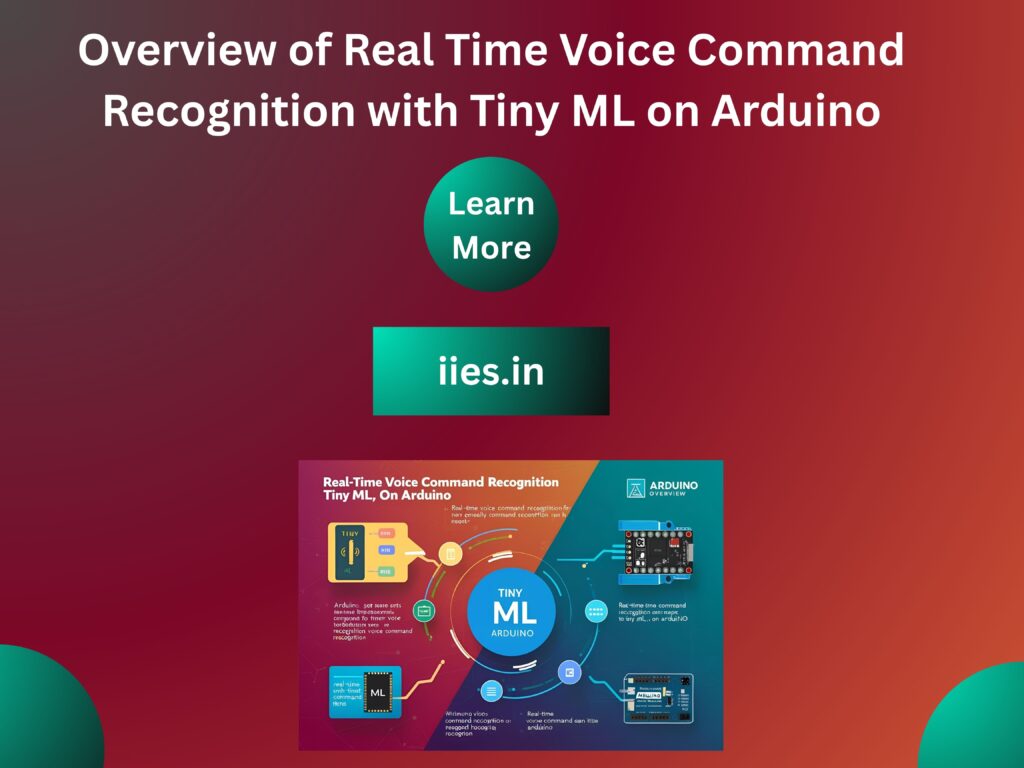
Voice control is transforming how we interact with technology—making devices smarter, faster, and more intuitive. Traditionally, voice recognition systems have relied heavily on cloud computing, requiring a constant internet connection and raising concerns about latency, privacy, and power consumption. However, with TinyML (Tiny Machine Learning), it’s now possible to run lightweight machine learning models directly on microcontrollers, enabling intelligent and responsive edge devices that work completely offline.
This tutorial focuses on building a real-time, offline voice command recognition system using the Arduino Nano 33 BLE Sense and Edge Impulse. The Nano 33 BLE Sense is a powerful yet compact development board equipped with an ARM Cortex-M4 processor and a built-in microphone, making it an ideal choice for embedded AI applications. By using Edge Impulse Studio, you can easily collect and label your own voice data, preprocess it with MFCC (Mel Frequency Cepstral Coefficients), and train a lightweight neural network model tailored for speech command classification.
No internet connection is required for offline inference.
Low latency: Quick reaction to orders. Low power: Ideal for gadgets that run on batteries. Privacy: The device retains the audio data.
Hardware specifications
Workflow Overview Gather voice samples for the words “yes,” “no,” “stop,” and “go.” Use Edge Impulse to train a classification model. Install the model as a C++ library on the Arduino. In real time, run inference and adjust actions accordingly.
Step 1: Gather and Use Edge Impulse to Train a Voice Model: Visit https://studio.edgeimpulse.com to register. Using the Edge Impulse CLI (edge-impulse-daemon), connect your Nano 33 BLE Sense. Take vocal samples, such as “go,” “stop,” “left,” and “right.” To train a model, use: Block for audio processing: MFCC Learning block: CNN or Dense Neural Network classification
Step 2: Deploy to Arduino Select Deployment in Edge Impulse Studio. After choosing the Arduino library, download the.zip file. Launch Arduino IDE, select Sketch, then Include Library, and finally add the.ZIP library. Incorporate the library into your drawing.
Step 3: Inference Using an Arduino Sketch



Step 4: Deployment and Testing Talk clearly into the microphone on the board. Check the serial output for any commands that are detected. Connect actuator code (e.g., LEDs, control motors, etc.).
PDM.setBufferSize ()
Applications
that are offline
Limitations Restricted vocabulary (usually between 4 and 10 commands)
Echo and noise sensitivity Needs a wide enough range of training data to be resilient.
Real-time voice command recognition on Arduino-class microcontrollers is made possible by TinyML. Without requiring cloud connectivity, you can design responsive, low power, and private voice
Interfaces for your projects with the Edge
Impulse and Arduino Nano 33 BLE Sense.
Indian Institute of Embedded Systems – IIES